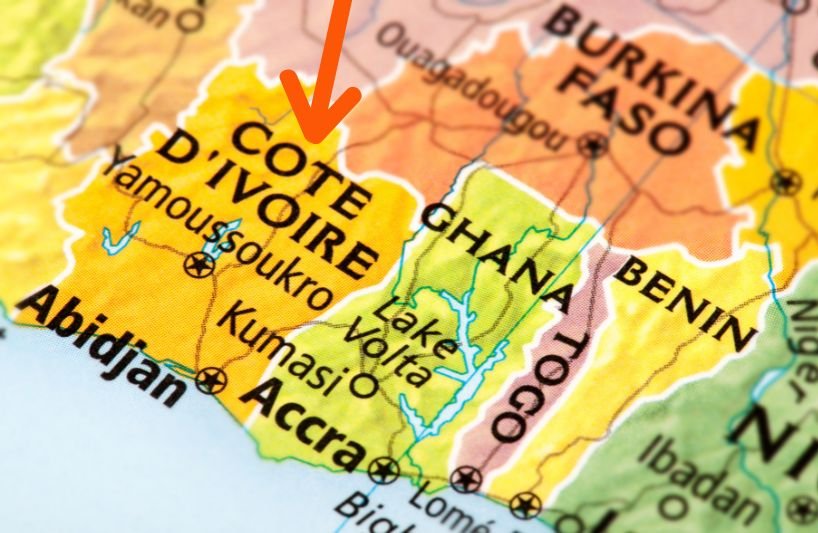Cleaner, Greener Chocolate: Why Agroforestry Is Better For People, Planet, and Farmer’s Pockets
Historically, the methods used to farm cocoa have had devastating effects on the environment. But by embracing agroforestry, the industry has the opportunity to mitigate the risk of climate change and compensate in part for its dirty past.
What is Agroforestry?
Combine agriculture and forestry, and you get agroforestry. It’s a more environmentally friendly way of farming that integrates trees rather than seeing them as obstacles that need to be removed. It’s about considering how other plant life might complement the farm’s primary crop (in this case cocoa), leading to environmental, social, and economic benefits.
Agroforestry is not a replacement for natural forests. The ideal scenario is that deforestation doesn’t occur in the first place. However, agroforestry can, at least in a minor way, compensate for past deforestation. <Link to new deforestation blog>
Environmental, social, and economic benefits to Agroforestry include:
Increased tree cover to store carbon,
Improved soil health by pairing trees and plants complementary to each other,
Improved air moisture retention,
Supports biodiversity,
Allows farmers to diversify their income, and
There is evidence to suggest birds and animals previously displaced from their natural habitat may return to agroforestry environments.^~
Let’s zoom in on Côte d'Ivoire, one of the world’s largest cocoa producers
A 2021 study suggested that if agroforestry methods were adopted in current cocoa farming areas in Côte d'Ivoire, this could help to store 120 million metric tons of carbon (or 440 million metric tons of CO2 equivalent).* That’s equivalent to the CO2 emissions from 118 coal-fired power plants in one year according to the US Environmental Protection Agency Greenhouse Gas Equivalencies Calculator.**
This could restore 20% of Côte d'Ivoire’s forest cover by 2030.* This is significant as, if you’ve read our blog on deforestation, you’ll know that the region has lost 94% of tree cover in the past 60 years, with a third of that due to the chocolate industry. <Link to new deforestation blog>
Agroforestry is growing in popularity, but it’s still early days
Farmers are recognising the benefits of agroforestry as a method of mitigating the risks of climate change diversifying their income. Here are some ways we’d like to see their efforts supported by companies and policymakers.
1. Commitment
A target year to source 100% of cocoa from agroforestry (a few front-runner companies have already done this and fifteen others have time-bound commitments to achieve this) as well as global, rather than region-based, agroforestry policy.
2. Unity
A clear industry-wide definition of agroforestry.
3. Incentive
Currently, legal restrictions on land management and complex taxation frameworks hinder the sustainable development of agroforestry.
4. Monitoring
Ongoing monitoring systems to ensure agroforestry projects succeed long term. In some agroforestry projects, up to 90% of the non-cocoa trees planted end up dying.
5. Details
Not all companies provided us with clear-cut percentages of vegetation coverage, canopy cover, and species per hectare. Companies need to seek out and record these details as part of their monitoring and measurement efforts.
I am but one individual chocolate-lover, what can I do to help?
It’s not all bitter, we’ve found a number of companies leading the way, and more and more are joining the ranks. What makes companies really pause and pay attention is data and their bottom line. With that in mind, the best way to create positive change is to get out and eat some chocolate! We can think of worse ways to be an activist.
Click here to explore the top-ranked brands. <Link to scorecard>
Make a tax-deductible donation. Our support comes from individual donors just like you – who want to make an impact in eliminating modern slavery.
Share Just like chocolate, this blog is better shared.
Author: Cristiana Bernardi, Senior Lecturer in Accounting and Financial Management at The Open University Business School (UK). Co-written by Athina Greenhalgh.
References
^Fiorentino, A (2022) How the world’s best chocolate is getting even better. https://www.nationalgeographic.com/environment/article/how-the-worlds-best-chocolate-is-getting-even-better https://www.bloomberg.com/news/articles/2021-09-26/chocolatier-protecting-madagascar-s-lemurs-eyes-carbon-credits?leadSource=uverify%20wall
~Sguazzin, A (2021) Chocolatier Protecting Madagascar’s Lemurs Eyes Carbon Credits. https://www.bloomberg.com/news/articles/2021-09-26/chocolatier-protecting-madagascar-s-lemurs-eyes-carbon-credits?leadSource=uverify%20wall#xj4y7vzkg
*Critchley, M., Sassen, M. and Umunay, P. (2021) Mapping opportunities for cocoa agroforestry in Côte d’Ivoire: Assessing its potential to contribute to national forest cover restoration targets and ecosystem services co-benefits. UNEP World Conservation Monitoring Centre. Cambridge UK. https://www.un-redd.org/sites/default/files/2022-01/202112_Mapping%20Potential%20for%20Cocoa%20Agroforestry%20Report_10%20EN%20%28online%29.pdf
**US Environmental Protection Agency, (2022), Greenhouse Gas Equivalencies Calculator. https://www.epa.gov/energy/greenhouse-gas-equivalencies-calculator#results
Higonnet et. al. 2019. Cocoa and African Deforestation: Assessing the Cocoa and Forests Initiative in Ghana and Côte d’Ivoire. Briefing paper. Mighty Earth, Washington, DC, USA. Available at: http://www.mightyearth.org/wp-content/uploads/Problems-and-solutions-concerning-the-CFI-in-Ghana-and-Co%CC%82te.-final.pdf.
Nair, P. K. R. (1993). An introduction to agroforestry. Dordrecht, London: Kluwer Academic Publishers in cooperation with International Centre for Research in Agroforestry.
Sanial, E. (2019). A la recherche de l'ombre, géographie des systèmes agroforestiers émergents en cacaoculture ivoirienne post-forestière. Available at: https://www.researchgate.net/publication/338549035_A_la_recherche_de_l%27ombre_geographie_des_systemes_agroforestiers_emergents_en_cacaoculture_ivoirienne_post-forestiere

